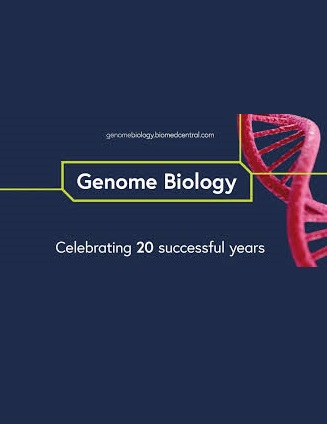HebQTLs reveal intra-subgenome regulation inducing unbalanced expression and function among bread wheat homoeologs
IF 10.1
1区 生物学
Q1 BIOTECHNOLOGY & APPLIED MICROBIOLOGY
引用次数: 0
Abstract
Polyploidy contains multiple gene copies, known as homoeologs. Differential expression of homoeologs confers expression plasticity and facilitates the adaptation and domestication of major polyploid crops. However, how this homoeolog expression bias is produced and genetically regulated remains elusive. Here we uncover substantial variation in homoeolog expression bias among the root transcriptomes of a natural population of 406 bread wheat (Triticum aestivum ssp. aestivum) accessions collected worldwide. We develop a new model allowing us to identify 14,727 quantitative trait loci regulating the variation in homoeolog expression bias (hebQTLs), indicating that homoeolog expression bias is genetically regulated and can be predicted using genotyping data. The hebQTLs mostly regulate the expression of homoeologs in the same subgenome and downregulate expression to produce homoeolog expression bias, suggesting that intra-subgenomic rather than inter-subgenomic interactions induce homoeolog expression bias. Furthermore, we determine that hebQTL-regulated homoeologs exhibit higher genetic diversity and weaker biological functions than their counterparts. Notably, the downregulation of 38.4% of hebQTL-regulated homoeologs is compensated for by the upregulation of other homoeologs within the triad. Our findings reveal how homoeolog expression is coordinated at the genetic level and provide an avenue for leveraging homoeolog expression bias to improve polyploid crops.HebQTLs揭示了在面包小麦同源物中诱导不平衡表达和功能的亚基因组内调控
多倍体包含多个基因拷贝,称为同源。同源物的差异表达赋予了多倍体作物表达的可塑性,有利于多倍体作物的适应和驯化。然而,这种同源表达偏差是如何产生和基因调控的仍然是难以捉摸的。本研究揭示了406面包小麦(Triticum aestivum ssp)自然群体根转录组之间同源表达偏倚的实质性变化。Aestivum)世界各地收集的资料。我们建立了一个新的模型,使我们能够识别14,727个调节同源表达偏倚(hebQTLs)变异的数量性状位点,表明同源表达偏倚是遗传调控的,可以使用基因分型数据进行预测。这些hebqtl主要调控同源基因在同一亚基因组中的表达,并下调表达从而产生同源基因表达偏倚,这表明是亚基因组内而非亚基因组间的相互作用导致同源基因表达偏倚。此外,我们确定hebqtl调控的同源物表现出更高的遗传多样性和较弱的生物学功能。值得注意的是,38.4%的受bqtl调控的同源物的下调被三联体中其他同源物的上调所补偿。我们的研究结果揭示了同源表达在遗传水平上是如何协调的,并为利用同源表达偏倚来改善多倍体作物提供了一条途径。
本文章由计算机程序翻译,如有差异,请以英文原文为准。
求助全文
约1分钟内获得全文
求助全文
来源期刊

Genome Biology
Biochemistry, Genetics and Molecular Biology-Genetics
CiteScore
21.00
自引率
3.30%
发文量
241
审稿时长
2 months
期刊介绍:
Genome Biology stands as a premier platform for exceptional research across all domains of biology and biomedicine, explored through a genomic and post-genomic lens.
With an impressive impact factor of 12.3 (2022),* the journal secures its position as the 3rd-ranked research journal in the Genetics and Heredity category and the 2nd-ranked research journal in the Biotechnology and Applied Microbiology category by Thomson Reuters. Notably, Genome Biology holds the distinction of being the highest-ranked open-access journal in this category.
Our dedicated team of highly trained in-house Editors collaborates closely with our esteemed Editorial Board of international experts, ensuring the journal remains on the forefront of scientific advances and community standards. Regular engagement with researchers at conferences and institute visits underscores our commitment to staying abreast of the latest developments in the field.
 求助内容:
求助内容: 应助结果提醒方式:
应助结果提醒方式:


